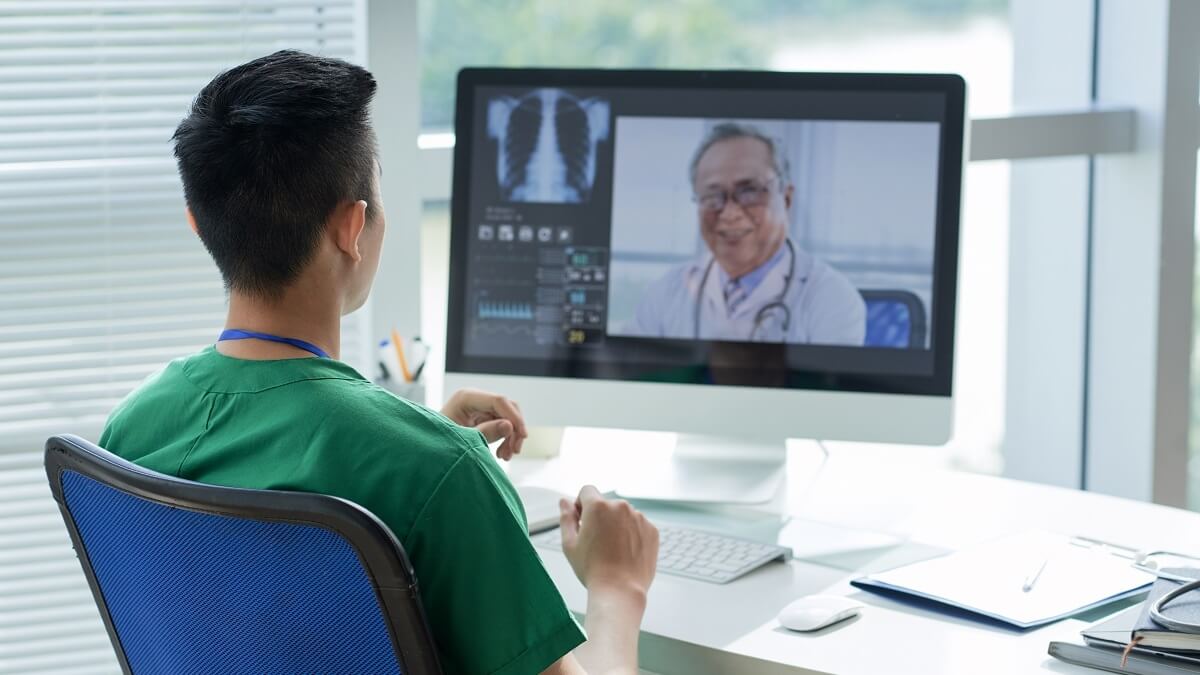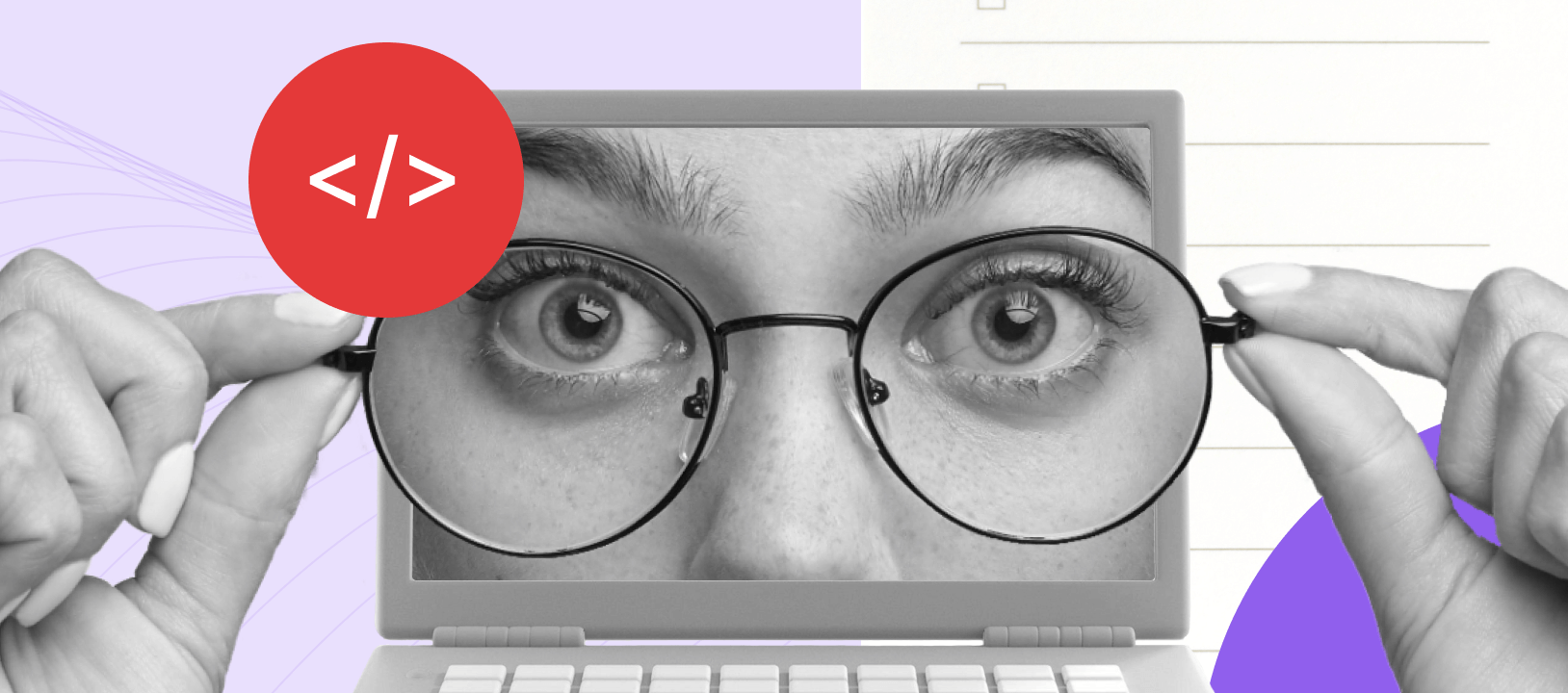We continue to dive into the Telehealth sphere and this article is about the main and, probably, best part of Telehealth — Telemedicine.
In the previous article about Telehealth, we’ve already mentioned some information about Telemedicine, as it has the same origin story when a few hospitals started experimenting with telemedicine to reach patients in remote locations and then NASA adopted and improved this technology.
But before we start, let’s differentiate these two very similar terms.
Telemedicine and Telehealth — similar, but not equal

So what is the difference between Telemedicine and Telehealth?
Both terms “telehealth” and “telemedicine” are often used interchangeably. In fact, even the American Telemedicine Association (ATA) considers them to be interchangeable terms. And it’s very understandable since Telehealth and Telemedicine encompass very similar services like medical education, mHealth, e-health, distant patient monitoring and consultation, health wireless applications, and many more.
However, if we go into detail, Telemedicine is really a subset of Telehealth.
Telehealth is a very broad term and includes all health-related services provided via telecommunications technology. Whereas Telemedicine refers specifically to clinical services.
According to the World Health Organization (WHO), telemedicine means “healing from a distance“. It is the use of telecommunications technology and information technologies to provide remote clinical services to patients. Online video consultations, home monitoring, digital imaging, remote diagnosis, and more — these are all Telemedicine is about.
Telehealth is the use of electronic information and telecommunications technologies to support and promote long-distance clinical health care, patient and professional health education, public health, and health administration.
While this definition sounds a lot like Telemedicine, there is one distinct difference. Above everything Telemedicine does, Telehealth also covers non-clinical events like administrative meetings, continuing medical education (CME), and physician training. Telehealth is not a specific service, but a collection of methods to improve patient care and education delivery.
In general, one can think of Telehealth as all-encompassing, as Telemedicine and telecare fall under its umbrella. As technology in the medical field continues to advance, the two terms will likely become more distinguishable.
Telemedicine applications

Telemedicine is used in many fields of medicine, ambulatory, and hospitals. Almost every field of medicine has a specific application for remote consultation with a patient or other specialist.
Owing to the lack of medical care, limited access to specialists in some areas, and remote locations for patients, especially in rural or sparsely populated areas, Telemedicine is incredibly useful for any health-care provider working to increase access to quality medical care for patients.
Some medical specialties were the first to implement Telemedicine and pushed the development of specific solutions for their field. As a result, there are several key niche Telemedicine specialties.
Teleradiology is one of the earliest areas of Telemedicine starting from the 1960s. Teleradiological solutions have been developed to improve access to X-ray diagnosis, as small hospitals sometimes have no x-ray technicians in the state or do not have access to 24-hour radiology. They had used broadcast television and closed circuit to send medical images that had been captured by x-rays. Today’s Teleradiology solutions offer massive possibilities and tools for providers in one place to safely send the x-rays and patient records to a qualified radiologist at another location and receive a quick patient consultation.
Telepsychiatry allows qualified psychiatrists to remotely treat patients, providing increased access to mental health services. Telepsychiatry is very popular as there are very few available psychiatrists, especially qualified ones, and also because psychiatry often does not require the same physical exams of the medical field.
Teledermatology solutions are typically about storage-and-forward technologies. These tools allow medical providers to receive and remotely diagnose pictures of a rash, birthmark, or other skin anomalies from patients. Teledermatology solutions enable the PCP to continue to coordinate patient care and offer quick feedback for the need for a further in-person examination.
Teleoncology and Telerehabilitation are focused to provide more accessible and convenient care or rehab services remotely. While some solutions just forward images for the diagnosis, others are live video platforms and allow patient consults with specialists online.
There are many more specialties out there that benefit from Telemedicine and actively use it, so we cover the rest of them in future articles.
Benefits for patients and providers

Health systems, medical practitioners, and qualified medical institutions use Telemedicine to provide better medical care. With Telemedicine, patients no longer have to schedule an in-person visit with a physician to receive treatment. The use of secure video and audio connections makes it possible for specialists to treat patients remotely due to various issues, including locations with limited access.
Technologies that are embedded with Telemedicine solutions, such as EHRs, AI diagnostics, and medical streaming devices, can better assist providers in diagnosis and treatment. The latter helps providers to monitor patients in real-time and adjust treatment plans as needed. This eventually leads to greater results for patients.
Another benefit for providers is increased revenues. With Telemedicine use, doctors can see more patients without the need to hire more staff or increase office space. And it’s also more eco-friendly because lessens transportation needs: fewer hospital trips, which means fewer emissions to the atmosphere and fewer traffic jams.
However, Telemedicine also has several drawbacks — in its virtual interaction nature and because of social and technological barriers.
Like most technology solutions, Telemedicine platforms usually require some training and equipment purchases. The costs really depend on the solution and may require constant training and various mobile health devices. But the more technologies are evolving, the fewer spendings are needed and usually may require only a new webcam. Telemedicine also reduces in-person interactions with doctors, but for minor acute conditions, like infections, they are not that necessary. In these cases, on the contrary, Telemedicine saves time and money for patients, doctors, and a healthcare system.
The good news is that with the growing popularity and widespreadness, we are likely to see that these shortcomings would solve themselves. With new technological advances and changing policies that increasingly support Telemedicine, we are constantly finding ways to improve Telemedicine and make it a viable and even beneficial form of care for many medical scenarios.
Pandemic as Telemedicine’s proof of concept

COVID-19 pandemic forced many patients to stay home without the possibility to receive needed consultation or treatment. Even where in-person care may be available, people fear leaving home and expose themselves and their families to this potentially deadly virus.
Telemedicine is a real lifeline, especially for patients isolated and desperate for care. Doctors can consult more patients in just a few weeks than in months of in-person appointments.
Patients aren’t the only ones embracing virtual care. Suddenly telehealth, which has historically been underutilized, has emerged as a lifesaver for many health systems turning to virtual solutions to serve more patients while protecting the workforce and preserving personal protective equipment (PPE).
With many physicians’ offices closed and urgent care clinics turning away patients with any hint of respiratory symptoms, the demand for Telemedicine is rising dramatically.
For example, UCLA’s physicians are currently seeing thousands of patients each day without the need of leaving their places. They’ve been able to manage the vast majority of patients very comfortably through Telemedicine tools. And one more great thing about Telemedicine is helping patients to manage chronic diseases such as diabetes, hypertension, congestive heart failure (CHF), chronic obstructive pulmonary disease (COPD), and others.
Health systems are striving hard to protect their employees while keeping the same capacities or even expanding them. PPE is proved to be extremely effective against COVID-19, but many hospitals around the world are concerned about limited supplies and conserving them.
One of the ways to save valued PPE and not to waste it irrelevantly is by incorporating Telemedicine into emergency, inpatient, and critical care practices. Using Telemedicine tools, it becomes possible to safely triage patients in the waiting room, in outdoor tents, or even in their cars, protecting patients and staff from unnecessary exposures.
That’s it for now

So, basically, this is all the essential information about Telemedicine that you need to be familiar with. As you can see, the subject is very extensive, and even capturing only the highlights leads to a lot of information.
And if you consider implementing a healthcare software solution in your organization and are looking for a reliable provider, feel free to drop us a line. Our team of experts is ready to help you with your custom software development.









